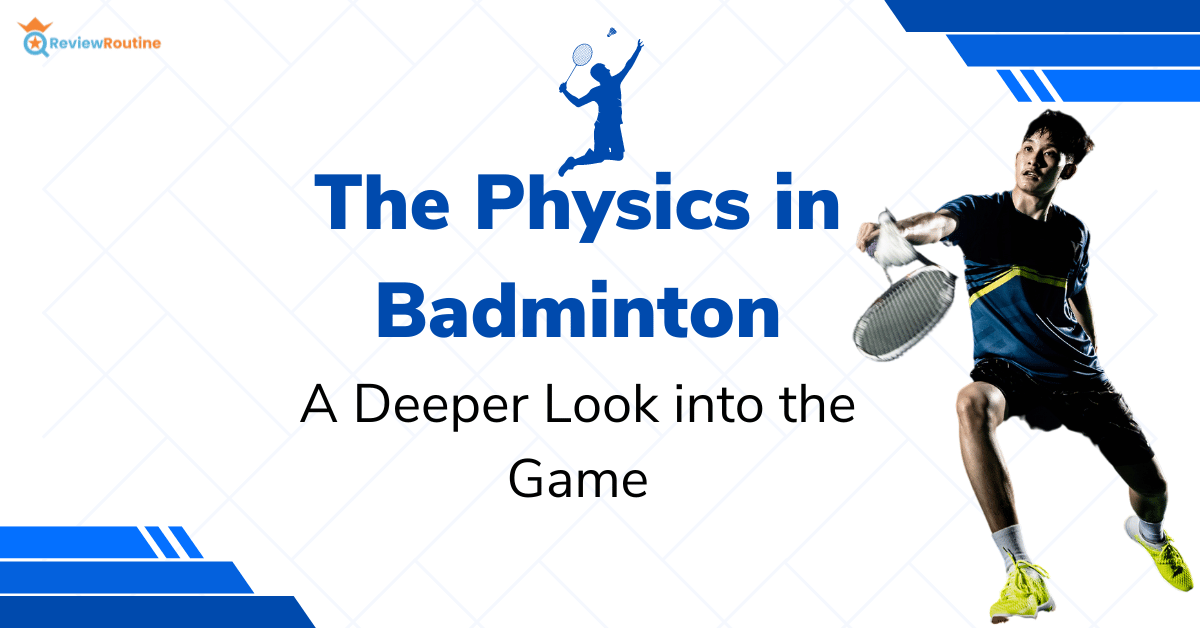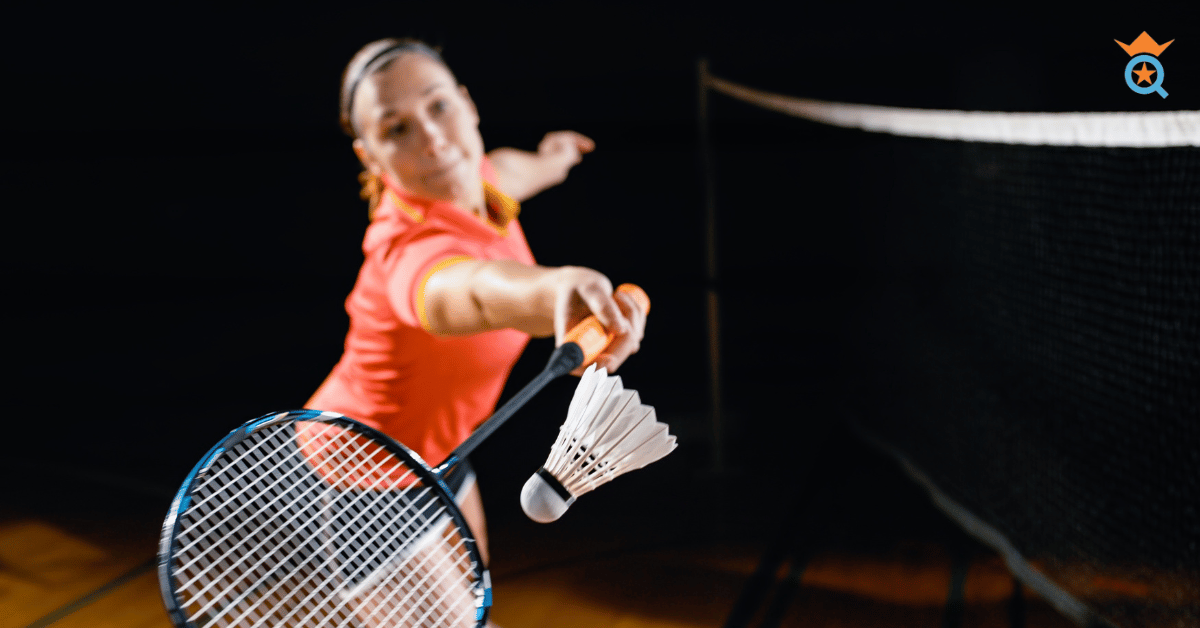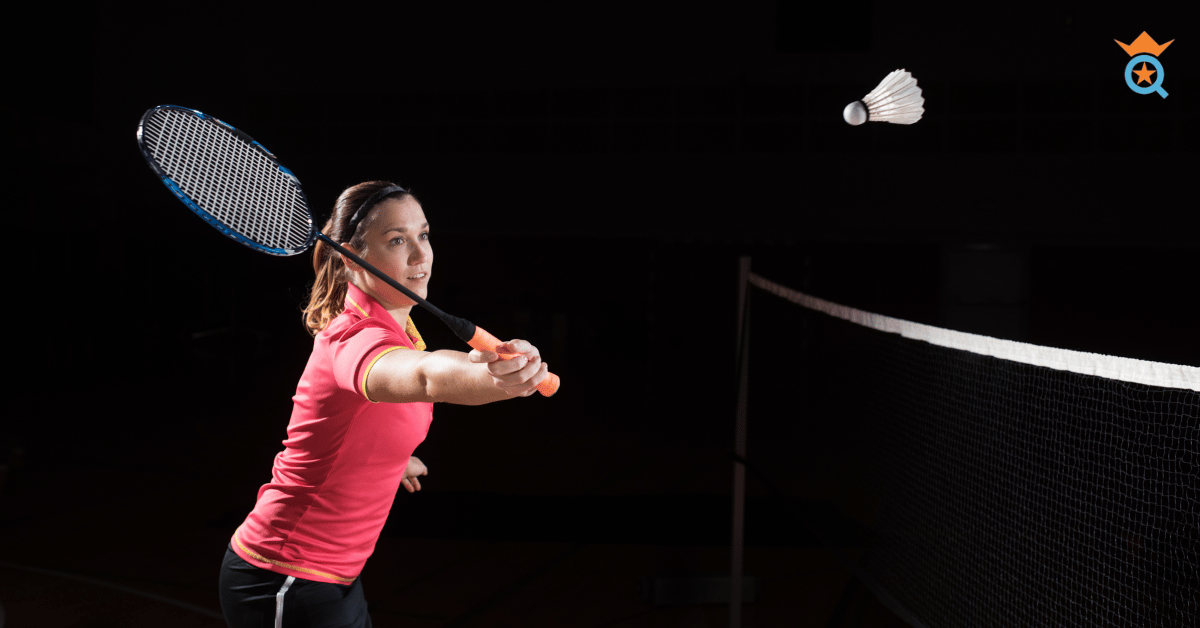Badminton is a popular racket sport that involves hitting a shuttlecock, or "birdie," across a net. The unique characteristics of the shuttlecock have led to extensive research on the physics of badminton.
This article delves into the various aspects of badminton physics, from shuttlecock dynamics to the influence of different strokes on gameplay.

Shuttlecock Dynamics and Trajectories
The badminton shuttlecock is an unusual projectile because it flips on impact with a racket, always flying cork-first. This flipping motion occurs due to the shuttlecock's conical shape and non-homogeneous mass distribution, with the cork being denser than the feathers.
Shuttlecock trajectories have been a topic of interest for many researchers. A recent study by Caroline Cohen and her team at Ecole Polytechnique and ESPCI Paris Tech focused on the flip phenomenon and its implications on game strategies.
They used a high-speed video camera to record shuttlecock flips, revealing a typical flip sequence involving 1 ms contact time with the racket, 20 ms for the initial flip, and an 80 ms oscillation time for stabilization.
Shuttlecock Geometry and Orientation
The researchers also investigated how shuttlecock geometry influences flipping dynamics by conducting free fall experiments in a water tank.
They compared shuttlecock prototypes with different feather skirt opening angles and discovered that both small and large opening angles resulted in long flipping and stabilizing times.
Real shuttlecocks have been empirically designed with intermediate opening angles for rapid flipping and stabilization.
Feather vs. Plastic Shuttlecocks
Experienced badminton players often prefer feather shuttlecocks over plastic ones due to their ability to be hit at higher speeds without exiting the court.
The researchers conducted tests in wind tunnels and found that feathered shuttlecocks become more deformed than plastic ones, resulting in a more triangular trajectory that appeals to players.

Strokes and Gameplay Strategies
Understanding shuttlecock dynamics allowed the researchers to propose a classification of different types of strokes. They estimated the probability of each stroke being a "killing shot" – a winning shot that the opponent cannot return.
The analysis showed that certain stroke dynamics were more likely to be killing shots, while others were better suited for preparatory shots.

The Science Behind Shuttlecock Flights
Many of the shuttlecock's characteristic features stem from its center of mass being about 3 cm in front of its center of pressure. This difference causes the shuttlecock to exhibit stabilizing aerodynamic torque and its unique flipping motion.
The principles of shuttlecock flight can also apply to other projectiles with a non-homogeneous mass distribution along their axis, such as air missiles and dandelion seeds or "achenes."
The researchers found that the flipping and stabilizing times of a dandelion achene are predicted by the same laws established for the shuttlecock.
The Bottom Line
The physics in badminton plays a crucial role in the game, from shuttlecock dynamics and trajectories to stroke strategies.
Understanding these principles can help players improve their skills and develop more effective gameplay tactics.
Moreover, the study of badminton physics can also provide insights into the behavior of other projectiles with similar mass distributions, such as dandelion seeds and air missiles.
Frequently Asked Questions
What is the physics of the shuttlecock?
The physics of the shuttlecock involves its unique aerodynamics, flipping motion, and flight trajectory. The conical shape and non-homogeneous mass distribution of the shuttlecock cause it to flip upon impact with a racket, always flying cork-first. Researchers have extensively studied the influence of shuttlecock geometry on its flipping dynamics and trajectory.
How is momentum used in badminton?
Momentum is used in badminton when players transfer their body's momentum to the racket and, ultimately, to the shuttlecock. Effective use of momentum can result in powerful shots, such as smashes or clears. Players can generate momentum by using proper footwork, body rotation, and arm movement during the execution of their strokes.
How does projectile motion help in badminton?
Understanding projectile motion helps badminton players predict the trajectory of the shuttlecock, allowing them to anticipate where it will land and position themselves accordingly. This knowledge also enables players to strategize their shots, selecting the optimal angles and speeds for different strokes to maximize their effectiveness.
What is kinetic energy in badminton?
Kinetic energy, in the context of badminton, refers to the energy possessed by the moving shuttlecock and the moving racket. When a player hits the shuttlecock, they transfer kinetic energy from the racket to the shuttlecock, causing it to move through the air. The amount of kinetic energy transferred depends on factors such as the speed and mass of the racket and the shuttlecock.
How does physics work in badminton?
Physics plays a crucial role in badminton through the principles of aerodynamics, momentum, projectile motion, and kinetic energy. These principles govern the behavior of the shuttlecock, the transfer of energy between the racket and the shuttlecock, and the player's movements on the court. Understanding these principles can help players improve their skills and develop effective gameplay tactics.
What is the physics of hitting the shuttlecock?
The physics of hitting the shuttlecock involves the transfer of energy and momentum from the racket to the shuttlecock. Factors such as racket speed, angle of impact, and timing determine the trajectory and speed of the shuttlecock after being hit. Additionally, the unique flipping motion of the shuttlecock is a key aspect of hitting it in badminton.
Where does the power in a badminton smash come from?
The power in a badminton smash comes from a combination of body movement, racket speed, and timing. Players generate power by using proper footwork, body rotation, and arm movement during the execution of the smash. The transfer of energy and momentum from the player's body and racket to the shuttlecock results in a powerful shot.
What is the projectile motion of the badminton smash?
The projectile motion of the badminton smash is characterized by a fast, downward trajectory aimed at the opponent's court. A well-executed smash has a steep angle and high speed, making it difficult for the opponent to react and return the shot. This aggressive shot relies on the principles of projectile motion, such as initial velocity, launch angle, and air resistance, to achieve its desired effect.








